| Listing 1 - 10 of 52 | << page >> |
Sort by
|
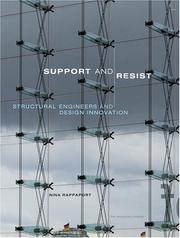
ISBN: 9781580931878 1580931871 Year: 2007 Publisher: New York : Monacelli Press,
Abstract | Keywords | Export | Availability | Bookmark
 Loading...
Loading...Choose an application
- Reference Manager
- EndNote
- RefWorks (Direct export to RefWorks)
As architectural projects have grown larger and more complex, as materials have become more specialized and advanced, as the world's cities have developed in size and density, the collaborative partnership of architects and structural engineers has gained prominence. Many of the major works of the early twenty-first century would have been difficult to build or even conceive without the contributions of firms like Ove Arup & Partners, Buro Happold, and Mutsuro Sasaki & Partners, to name just a few. 'Support and Resist' is the first book to focus on the revolution in engineering culture in which structure shares the stage with design.In profiles of fourteen American and international engineers and more than thirty case studies, Nina Rappaport details facets of this revolution: collaboration, intuition, structural integration, hybrid structures, structure as decoration, computer workflow, and fabrication technologies.
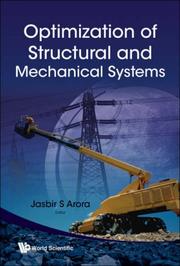
ISBN: 1281938122 9786611938123 9812779671 9789812779670 9781281938121 9789812569622 9812569626 Year: 2007 Publisher: Hackensack, NJ World Scientific
Abstract | Keywords | Export | Availability | Bookmark
 Loading...
Loading...Choose an application
- Reference Manager
- EndNote
- RefWorks (Direct export to RefWorks)
Computational optimization methods have been applied to many applications. Written by researchers in the field of optimization, this book covers state-of-the-art computational algorithms as well as applications of optimization to structural and mechanical systems. It also presents the formulations of the problems and their numerical solutions.
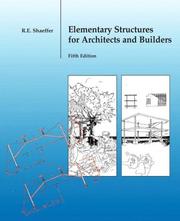
ISBN: 0131186558 9780131186552 Year: 2007 Publisher: Upper Saddle River, N.J. : Pearson Prentice Hall,
Abstract | Keywords | Export | Availability | Bookmark
 Loading...
Loading...Choose an application
- Reference Manager
- EndNote
- RefWorks (Direct export to RefWorks)
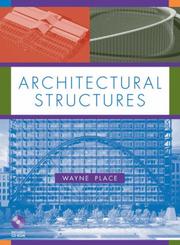
ISBN: 9780471725510 047172551X Year: 2007 Publisher: Hoboken, N.J. : J. Wiley & Sons,
Abstract | Keywords | Export | Availability | Bookmark
 Loading...
Loading...Choose an application
- Reference Manager
- EndNote
- RefWorks (Direct export to RefWorks)
Structural design. --- Structural design --- Constructions --- Case studies --- Calcul --- Cas, Etudes de --- Structural design - Case studies
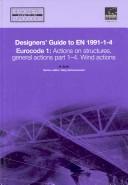
ISBN: 9780727731524 0727731521 Year: 2007 Publisher: London : Thomas Telford,
Abstract | Keywords | Export | Availability | Bookmark
 Loading...
Loading...Choose an application
- Reference Manager
- EndNote
- RefWorks (Direct export to RefWorks)
Eurocodes (Standards) --- Buildings --- Structural design --- Eurocodes (Normes) --- Aerodynamics --- Standards --- Eurocodes (Standards).
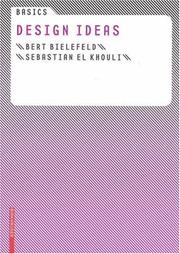
ISBN: 3035612374 3035611351 9783035612370 9783764381127 9783035611359 3764381124 9783764380885 3764380888 9783764381110 3764381116 Year: 2007 Publisher: Basel
Abstract | Keywords | Export | Availability | Bookmark
 Loading...
Loading...Choose an application
- Reference Manager
- EndNote
- RefWorks (Direct export to RefWorks)
Design Ideas offers students a variety of different ways to go about finding a design solution. In addition to suggesting fundamental ways to get the creative process moving and develop a design approach, it also proposes various sources of inspiration for design ideas. It focuses on the three elements of place, form, and function, which can sometimes constitute immediate springboards for concrete designs. These elements must eventually be incorporated as the design process.Subjects: Creativity in the design process; Sources of inspiration and design approaches; Working with place; Working with form; Working with function.
Architectural design. --- Design --- Structural design --- Industrial design. --- Design, Industrial --- Mechanical drawing --- New products
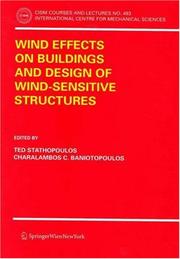
ISBN: 9783211730751 Year: 2007 Publisher: Wien ; New York : Springer,
Abstract | Keywords | Export | Availability | Bookmark
 Loading...
Loading...Choose an application
- Reference Manager
- EndNote
- RefWorks (Direct export to RefWorks)
Wind resistant design. --- Buildings --- Structural design. --- Résistance au vent. --- Constructions --- Constructions --- Aerodynamics. --- Aérodynamique. --- Calcul.
Dissertation

ISBN: 9789056828127 Year: 2007 Publisher: Leuven K.U.Leuven. Faculteit Ingenieurswetenschappen
Abstract | Keywords | Export | Availability | Bookmark
 Loading...
Loading...Choose an application
- Reference Manager
- EndNote
- RefWorks (Direct export to RefWorks)
De laatste jaren zijn verschillende numerieke modellen ontwikkeld voor de voorspelling van grondtrillingen in de bebouwde omgeving. Deze modellen beschrijven de trillingsbron, de transmissie van golven door de grond, en de respons van het gebouw. De transmissie van golven door de grond wordt bepaald door de dynamische grondkarakteristieken. De cruciale parameters zijn de dynamische glijdingsmodulus en de materiaaldempingsverhouding van de grond. Deze eigenschappen worden bepaald door middel van in situ proeven of laboratoriumproeven. De volledige karakterisatie van de ruimtelijke variatie van de grondkarakteristieken is echter praktisch onmogelijk. Als gevolg hiervan zijn de grondkarakteristieken onzeker. In de thesis wordt de invloed van deze onzekerheid op de voorspelling van grondtrillingen bestudeerd. De focus ligt op de dynamische glijdingsmodulus. Er wordt een probabilistische aanpak gevolgd waarbij de variatie van de glijdingsmodulus met de diepte gemodelleerd wordt als een stochastisch proces. De variatie van de glijdingsmodulus in horizontale richting wordt genegeerd. De glijdingsmodulus wordt bepaald door middel van de spectrale analyse van oppervlaktegolven (Spectral Analysis of Surface Waves, SASW). Dit gebeurt op basis van een Bayesiaans schema. De a priori informatie over de glijdingsmodulus, die beschikbaar is voor de uitvoering van de SASW-proef, wordt gecombineerd met de experimentele resultaten van de SASW-proef ter bepaling van een a posteriori stochastisch grondmodel. Het a posteriori stochastische grondmodel wordt bemonsterd met behulp van een Markovketen-Monte Carlomethode. Zo wordt een ensemble van grondprofielen bekomen die in overeenstemming zijn met de resultaten van de SASW-proef. Dit ensemble wordt bestudeerd om de resolutie van de SASW-proef te beoordelen. Vervolgens wordt de voorspelling van grondtrillingen beschouwd. De trillingen aan het grondoppervlak ten gevolge van een hamerimpact op een kleine fundering worden voorspeld. Dit gebeurt aan de hand van een Monte Carlomethode, uitgaande van het ensemble van grondprofielen dat afgeleid is van de SASW-proef. Er wordt vastgesteld dat de variabiliteit van de trillingsvoorspellingen afhankelijk is van de frequentie. Bij lage frequenties volstaat de resolutie van de SASW-proef en blijft de variabiliteit van de respons beperkt. Bij hogere frequenties heeft de onzekerheid op de glijdingsmodulus een invloed op de voorspellingen en neemt de variabiliteit toe. In recent years, several numerical models have been developed to predict ground-borne vibrations in the built environment. These models contain elements related to the characterization of the source, the transmission of waves through the soil, and the response of the building. The transmission of waves through the soil is governed by the dynamic soil properties. Crucial properties are the dynamic shear modulus and the material damping ratio. These properties are determined by means of in situ tests or laboratory tests. The complete characterization of the spatial variation of the soil properties is practically impossible, however. As a result, soil models used in ground vibration predictions are subjected to uncertainty. In the present thesis, the impact of this uncertainty on the prediction of ground vibrations is studied. The focus is on the dynamic shear modulus. A probabilistic approach is followed, using a random process to model the variation of the shear modulus with depth. The variation in the horizontal direction is neglected. The uncertain shear modulus is determined from a Spectral Analysis of Surface Waves (SASW) test, following a Bayesian approach. The prior information on the shear modulus, which is available before the SASW test is performed, is combined with the experimental data from the SASW test to obtain a posterior stochastic soil model. The posterior stochastic soil model is sampled by means of a Markov chain Monte Carlo method. This leads to an ensemble of soil profiles that fit the experimental data. The resolution of the SASW test is assessed through inspection of this ensemble. Next, the prediction of ground vibrations is considered. The free field vibrations due to a hammer impact on a small foundation are predicted. A Monte Carlo method is applied, using the ensemble of soil profiles determined from the SASW test. The results are compared with experimental data. It is observed that the variability of the free field response is frequency dependent. In the low frequency range, the resolution of the SASW test is sufficient and the variability of the response is limited. At higher frequencies, the uncertainty involved in the SASW test affects the predicted response and its variability increases. Trillingen in de bebouwde omgeving zijn een vorm van milieuhinder die steeds meer aandacht krijgt. Deze trillingen worden veroorzaakt door weg- en treinverkeer, bouwactiviteiten zoals het inheien van palen, en industriële machines zoals weefgetouwen. De laatste jaren zijn verschillende modellen ontwikkeld waarmee deze trillingen numeriek voorspeld kunnen worden. Deze modellen maken het mogelijk de efficiëntie na te gaan van trillingsreducerende maatregelen, zowel in nieuwe als in bestaande situaties. Een belangrijk aspect bij de voorspelling van trillingen is de transmissie van golven door de grond. De eigenschappen van de grond zijn dus belangrijke parameters bij de voorspelling van trillingen. Deze eigenschappen worden bepaald door in situ proeven of laboratoriumproeven. Een veelvuldig gebruikte in situ proef is de SASW-proef. Daarbij worden golven gegenereerd door middel van een hamerimpact of een valgewicht. Deze golven worden opgemeten door middel van een aantal sensoren aan het grondoppervlak. De golven bereiken eerst de dichtbijgelegen sensoren en pas later de verafgelegen sensoren. Uit het tijdsverschil wordt de golfsnelheid afgeleid. Op basis hiervan wordt vervolgens het grondprofiel bepaald. Dit profiel beschrijft de variatie van de eigenschappen van de grond met de diepte. De bepaling van het grondprofiel uit de opgemeten golfsnelheid is een complex probleem dat meer dan één oplossing heeft. Het grondprofiel dat uit de SASW-proef volgt is dus slechts één van de mogelijke grondprofielen. Als gevolg hiervan zijn de eigenschappen van de grond onzeker. In de thesis wordt de invloed van deze onzekerheid op de voorspelling van trillingen nagegaan. Eerst wordt een groot ensemble van grondprofielen bepaald die kunnen volgen uit de resultaten van de SASW-proef. Op basis van elk van deze profielen worden de trillingen voorspeld ten gevolge van een hamerimpact op een kleine betonnen fundering. De robuustheid van de SASW-proef wordt beoordeeld op basis van de variatie van de voorspellingen voor de verschillende grondprofielen. De methodologie is ook toepasbaar op andere proeven ter bepaling van de grondeigenschappen en laat toe te bepalen welke proef gekozen moet worden om de variatie van de voorspellingen te minimaliseren.
Periodical
ISSN: 19461194 Year: 2007 Publisher: Chicago, IL : Council on Tall Buildings and Urban Habitat
Abstract | Keywords | Export | Availability | Bookmark
 Loading...
Loading...Choose an application
- Reference Manager
- EndNote
- RefWorks (Direct export to RefWorks)
Tall buildings --- Structural design --- Structural engineering --- Structural design. --- Structural engineering. --- Design and construction --- Design and construction. --- Engineering, Structural --- Structures, Engineering of --- High buildings --- High-rise buildings --- Highrise buildings --- Multistory buildings --- Architecture --- Engineering --- Engineering design --- Architectural design --- Strains and stresses --- Buildings
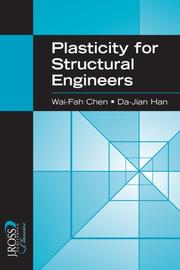
ISBN: 9781932159752 1932159754 9788131510933 813151093X Year: 2007 Publisher: Ft. Lauderdale, FL : J. Ross Pub.,
Abstract | Keywords | Export | Availability | Bookmark
 Loading...
Loading...Choose an application
- Reference Manager
- EndNote
- RefWorks (Direct export to RefWorks)
Plasticity. --- Structural design. --- Plasticity --- Structural design --- Engineering design --- Architectural design --- Strains and stresses --- Cohesion --- Deformations (Mechanics) --- Elasticity --- Plastics --- Rheology --- 620.17 --- 620.17 Measurement of mechanical properties of materials. Strength tests --- Measurement of mechanical properties of materials. Strength tests
| Listing 1 - 10 of 52 | << page >> |
Sort by
|

 Search
Search Feedback
Feedback About UniCat
About UniCat  Help
Help News
News